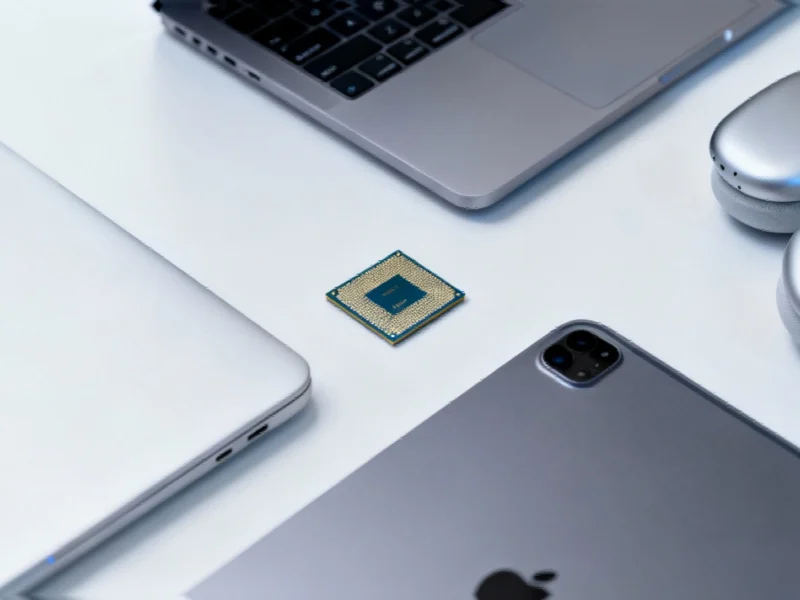Note: Featured image is for illustrative purposes only and does not represent any specific product, service, or entity mentioned in this article.
The Unprecedented Collaboration Reshaping Hardware Firmware
In a landmark move that transcends traditional competitive boundaries, AMD and Intel have jointly developed the Open Silicon Firmware Interface (openSFI), representing one of the most significant cross-industry collaborations in recent semiconductor history. This specification establishes a common architecture-neutral interface that fundamentally changes how host firmware interacts with silicon initialization firmware, creating a unified approach that benefits the entire technology ecosystem.
The openSFI initiative addresses a critical challenge in modern computing: the fragmentation of firmware interfaces across different silicon vendors. By defining a standardized contract between host firmware and silicon initialization, the specification enables modular, scalable, and vendor-agnostic integration of silicon into various firmware environments. This breakthrough means host firmware no longer needs to concern itself with the implementation details of silicon initialization—it simply relies on a clean, stable API contract to execute functions with predictable inputs and deterministic outputs.
Technical Foundation and Industry Impact
At its core, openSFI functions as the foundational contract that decouples host firmware development from silicon-specific initialization routines. This separation creates unprecedented flexibility for both hardware manufacturers and system integrators. The specification’s architecture-neutral design ensures compatibility across different processor architectures and platforms, potentially reducing development cycles and accelerating time-to-market for new systems.
This collaboration between the two semiconductor giants represents a strategic shift toward industry-wide standardization. As AMD and Intel forge unprecedented alliance on open standards, the industry stands to benefit from reduced fragmentation and improved interoperability. The timing is particularly significant given the increasing complexity of modern computing systems and the growing importance of firmware security.
Strategic Benefits Driving Adoption
The primary objectives of openSFI reflect a comprehensive approach to solving long-standing industry challenges:
- Unified initialization interfaces across multiple silicon vendors
- Simplified host firmware integration processes
- Cross-platform firmware reuse capabilities
- Reduced engineering costs and validation overhead
- Sustainable development through efficient resource utilization
These benefits align with broader industry developments in semiconductor manufacturing and system integration. The specification’s emphasis on sustainability through common tooling and efficient resource usage addresses growing environmental concerns while improving development efficiency.
Broader Industry Implications
The openSFI specification arrives at a pivotal moment for enterprise computing and cloud infrastructure. As organizations increasingly rely on heterogeneous computing environments, the ability to maintain consistent firmware interfaces across different silicon platforms becomes crucial. This standardization effort complements other cloud infrastructure initiatives aimed at improving interoperability and reducing operational complexity.
Security considerations also play a significant role in the openSFI value proposition. By establishing standardized interfaces and reducing firmware complexity, the specification contributes to more secure computing environments. This approach aligns with broader security mandates across the technology industry that emphasize proactive protection and standardized security practices.
Future Development and Ecosystem Growth
The success of openSFI will depend on widespread industry adoption beyond its founding companies. Early indications suggest strong interest from cloud providers, system manufacturers, and enterprise IT organizations. The specification’s vendor-agnostic design positions it well for broad acceptance across the computing landscape.
Looking forward, the principles behind openSFI could influence other areas of technology standardization. The collaboration demonstrates how related innovations in standardization and interoperability can create value across multiple industry segments. As the specification evolves, it may serve as a model for other cross-industry initiatives aimed at reducing fragmentation and improving compatibility.
The development of openSFI represents more than just a technical specification—it signals a new era of cooperation in an industry traditionally defined by intense competition. By working together to solve common challenges, AMD and Intel are creating a foundation for more efficient, secure, and sustainable computing ecosystems that will benefit the entire technology industry for years to come.
This article aggregates information from publicly available sources. All trademarks and copyrights belong to their respective owners.



